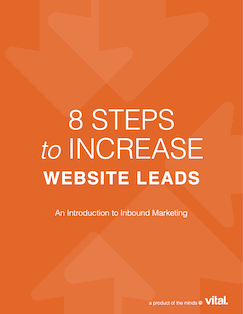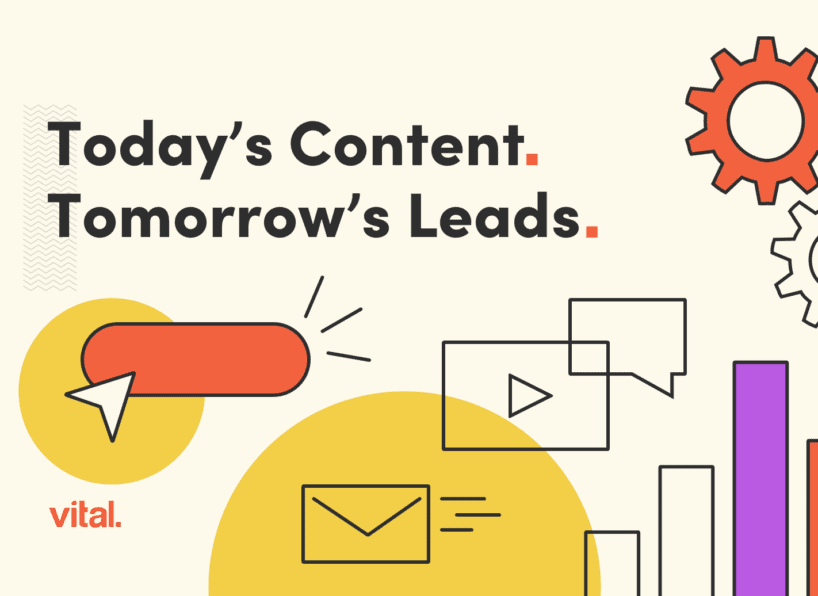In our digital-obsessed world, no one is safe from the influx of content marketing — even in the B2B realm. So long to the days where all B2B lead generation efforts depended on outbound marketing tactics such as cold calling, direct mailers and salesperson drop-bys. Welcome to the reign of inbound B2B content marketing materials like infographics, ebooks, blogging and social media!
Customer acquisition has matured to become web-centric, with potential leads turning to Google for answers and recommendations before they look anywhere else. That’s because we’ve become smarter searchers, expecting more specific results for whatever we’re looking for. We’re also incredibly perceptive to ads and capable of dodging campaign-bait, which means catching and holding someone’s attention is key for success.
Skeptical? Try this:
Think about the last time you were on the phone with a telemarketer for more than 10 seconds. Or the most recent piece of mail you received and hung on your fridge that wasn’t a bill. Now compare those to the amount of Google searches you make each day and how often you download an ebook or read an infographic.
I hate to say “I told you so,” but here we are…
B2B companies are not exempt from the power of content. In fact, 88% of B2B marketers claim to use content marketing. While that high percentage may not mean anything to you right off the bat, think of it in terms of your competition. That’s a large chunk of businesses with at least some kind of online presence.
So, is your content marketing plan able to compete?
First Things First: How Are You Tracking Your Lead Generation?
Do you know how many leads your latest marketing efforts generated? This could include anything from an ad in a magazine to that sole blog on your website that you wrote just to try out the platform.
Chances are that if you’re not utilizing content marketing to its fullest potential, many of your leads are all over the place, minimal or probably low-quality. This can create a mess when it comes time to analyze the year’s lead totals and set goals for the future.
An effective content marketing strategy helps enforce a strong baseline for lead analysis, since every piece of content can be measured. That best practices how-to guide generated 10% of your digital leads for the year? Great—write another one! Your long-form blog on do’s and don’ts was your most viewed of the year? Awesome—share it on social media and write a follow up!
Through your efforts, you can see where every single potential customer comes from, whether it’s a PPC landing page or a form submission to download your latest how-to guide. From there, you’re able to tailor your marketing plan based on what works and what doesn’t.
B2B Content Marketing’s Secret Weapon: Aligning Sales and Marketing
With the shift to a more digital scope comes some necessary adjustments from sales and marketing departments. Sales teams no longer have to hunt for leads. Through inbound content marketing, the leads are coming in to the sales team without any effort on their part. This creates more time for them to devote to closing new leads and potentially upselling existing customers.
The successful B2B marketing department’s responsibilities have evolved, too. It used to be that their main duty was to establish a strong sense of brand awareness within their company’s industry. Now, a B2B marketer’s job has transcended into bringing in the leads by creating this valuable content.
The effectiveness of your marketing will increase if both departments are on the same page. Marketing needs to understand what types of leads their content is bringing in and sales needs to know what content marketing is pumping out. (You can learn more on how to create internal protocols to align the two departments in our recent post on “smarketing.”)
Once your sales and marketing teams are on board with a content marketing strategy, you’ll be able to achieve the following:
Generate More Web Traffic, Generate More Leads
Content is the foundation of a healthy website. Search engines, like the almighty Google, will favor your pages if you follow the EAT guidelines in your content, which include:
- Expertise
- Authority
- Trust
Proving yourself as an expert in your field will influence your content’s authority. A high level of authority will mean that people trust you. Gaining the trust of your readers is absolutely necessary for high search rankings, which is why following the EAT guidelines will make or break your website’s success.
If you don’t think you need to worry about your content’s EAT, keep in mind that 67.6% of all clicks go towards the top five results of a search page. See? It’s not just for show.
Use Gated Content to Convert Higher Quality Leads
Someone filling out a form to download your latest white paper is going to be considered a quality lead. Not only have they visited your website, they’ve found your content so interesting that they want to learn more. They’re so intrigued by your amazing content offering that they took the time to enter their email address into a form and wait for the download. This may not seem like much, but with attention spans decreasing as the web advances, that’s considered a big deal.
You can take it a step further and qualify your leads by asking them to answer one or two questions that will allow you split looky-loos from true leads. For example, asking how many employees work at their company or what their role is at a company will help you spend time on the leads that are more likely to be ready to convert.
Use Your Content Marketing to Nurture Prospects
The B2B sales pipeline is a long one. On the flip side of the immediacy of closing most B2C leads, landing a B2B customer can take weeks or even months. Because of this, it’s critical to map out the buyer’s journey of your potential leads, and nurture them with relevant content for the presence of mind factor. If they signed up for your webinar on January 15th and never heard from you after, chances are that you’ll be forgotten about by January 16th.
Nurturing leads through marketing automation with valuable, relevant materials will help:
- Automate procedures to save time
- Cater content to the lead’s interests and needs
- Keep your company in the forefront of a lead’s mind
Of course, having a well-stocked library of content ready to go will streamline the nurturing process. This is where your robust B2B content marketing strategy will continue to pay off as an asset.
Digital Marketing Means Measurable Results
Beyond the exposure and brand awareness benefits lies another marketing essential: metrics!
Digital marketers love measuring the success of EVERYTHING, especially in data-driven digital marketing agencies like here at Vital. Data helps analyze what campaigns worked, what didn’t and what areas could use enhancements.
This is nearly impossible to do with traditional marketing tactics. Sure, you can get a general idea of the size of the audience that will see your ad in an industry publication, but there are no hard numbers that will help you measure the complete ROI. That’s where content marketing can really set you apart from your competitors.
Content Marketing Leads to Success
No pressure, but your online presence will either flourish or flounder based on your content marketing plan. By crafting quality, routine materials, you’ll ensure your current audience stays engaged and your potential leads become interested enough to convert.
Give us a shout to learn more about how your business can ramp up its content marketing or to talk about how you can get started!






